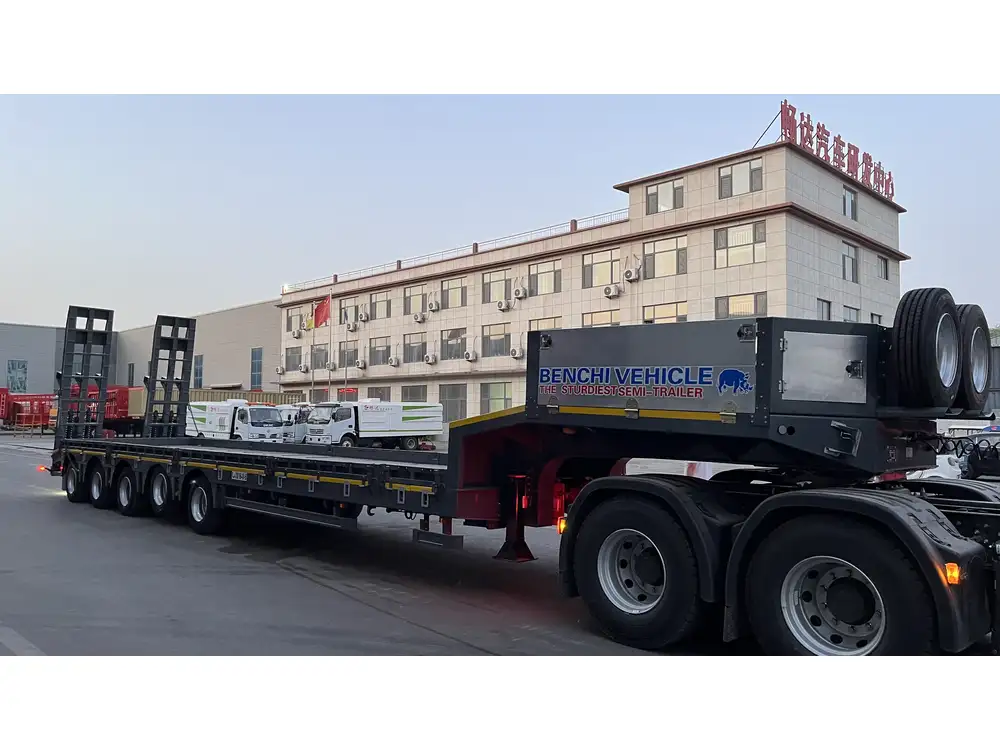In the expansive realm of transportation, specifically regarding freight movement, terminology can often be confusing. Two commonly used terms that frequently arise are “trailer” and “semi-trailer.” While they may seem interchangeable at a glance, they embody distinctive characteristics and applications. This article delves deep into the differences and functionalities of trailers and semi-trailers, providing clarity for manufacturers, logistics managers, drivers, and anyone involved in the freight transportation sector.
What is a Trailer?
At its most fundamental level, a trailer is a non-motorized vehicle designed to be towed behind a tractor or truck. Trailers can serve multiple purposes, including transportation of goods, equipment, or even passengers. They are generally characterized by the following features:
Full Support: Trailers bear their own weight entirely on wheels. They possess the ability to stand on their own when disconnected from the towing vehicle.
Types of Trailers: There exists a broad spectrum of trailers:
- Flatbed Trailers: Open platforms without sides or a roof, ideal for transporting oversized loads.
- Enclosed Trailers: Luggage and equipment trailers that offer protection from the elements.
- Utility Trailers: Smaller trailers typically used for recreational or light-duty purposes.
Legislation and Licensure: Regulations governing trailers can vary considerably by region, with specific requirements for registration, licensing, and roadworthiness.
Advantages of Trailers
- Versatility: Suitable for diverse applications, from household moving to commercial freight.
- Independent Operation: Can operate effectively without the need for attachment to a truck.

Limitations of Trailers
- Weight Capacity: Generally have a lower weight capacity compared to semi-trailers, thus limiting the volume and weight of shipments.
What is a Semi-Trailer?
A semi-trailer is a specialized type of trailer that is designed to be positioned behind a tractor unit, also known as a truck. Unlike a full trailer, a semi-trailer features only a portion of its length on wheels, with the front part designed to rest on the tractor’s fifth wheel coupling. Key characteristics include:
Partial Support: Semi-trailers rely on the tractor for support, with a significant portion of their structure resting on it while in motion.
Varied Designs: Semi-trailers are often customized according to freight needs:
- Reefer Trailers: Insulated trailers designed for temperature-sensitive cargo such as perishables.
- Tankers: Built for transporting liquids, capable of handling substantial weight.
- Dry Van Trailers: Enclosed designs which shield goods from external conditions.
Advantages of Semi-Trailers
- Higher Weight Capacity: Capable of carrying heavier and bulkier loads, maximizing transportation efficiency.
- Enhanced Maneuverability: Designed for better turning radius, making them more adaptable to urban environments.
- Efficiency in Loading/Unloading: Many semi-trailers come equipped with mechanisms that allow for quicker loading and unloading procedures.

Limitations of Semi-Trailers
- Dependency: Require a trucking tractor for operational functionality; cannot move independently.
Key Differences Between Trailers and Semi-Trailers
| Feature | Trailer | Semi-Trailer |
|---|---|---|
| Support | Full support on wheels | Partially supported by truck |
| Mobility | Can stand alone | Cannot move independently |
| Weight Capacity | Generally lower | Generally higher |
| Design | Various types available | Specialized design for specific use |
| Usage | Versatile applications | Primarily used for freight transport |
A Closer Examination of the Operational Use
To grasp the profound operational differences, consider how each type of unit fits into a logistical framework:
Trailers often see extensive use in scenarios requiring short-distance hauls or occasional transport, such as RVs or recreational vehicles. They shine in flexibility, serving personal and commercial needs without the necessity for an extensive fleet.
Semi-trailers, conversely, are the workhorses of major freight operations. Their design allows for substantial payloads extending well beyond the capacity of conventional trailers. With built-in features for secure cargo handling, they are indispensable for industries like construction, agriculture, and food services.

Considerations for Manufacturers
As a manufacturer of semi-trailers, understanding and responding to the distinct needs of your clientele can elevate your competitive advantage. Here are several strategies to cater effectively to the market:
Customization is Key
- Industry-Specific Solutions: Tailoring trailers for specific industries (e.g., refrigerated trailers for food transportation) can enhance your market reach.
- Innovative Designs: Prioritize lightweight yet durable materials that enable higher capacity without compromising safety standards.
Technology Integration
Smart Features: Consider integrating technology such as GPS tracking and telematics to provide customers with shipment transparency and efficiency.
Safety enhancements: Advancements such as anti-lock braking systems and automatic trailer brakes can attract conscientious buyers focused on fleet safety.

Sustainable Manufacturing Practices
- Eco-friendly Materials: Employ sustainable materials and practices to appeal to environmentally conscious clients.
- Fuel Efficiency: Designs that support lower fuel consumption not only benefit the environment but also operate as a marketing strength.
Final Thoughts
Navigating the complexities of trailers and semi-trailers becomes profoundly easier with an understanding of their key differences. For industry professionals and manufacturers alike, recognizing these distinctions can lead to informed choices that ultimately enhance operational efficiency and safety in freight transport.
By embracing innovative designs and integrating technological advancements, those in the semi-trailer manufacturing sector can not only meet the current demands but also shape future transportation logistics, paving the way for a more efficient and sustainable modus operandi in the freight transport industry.
As the transport landscape continues to evolve, our commitment as a manufacturer is not merely to adapt but to lead in providing solutions that cater effectively to the shifting paradigms of freight movement.



